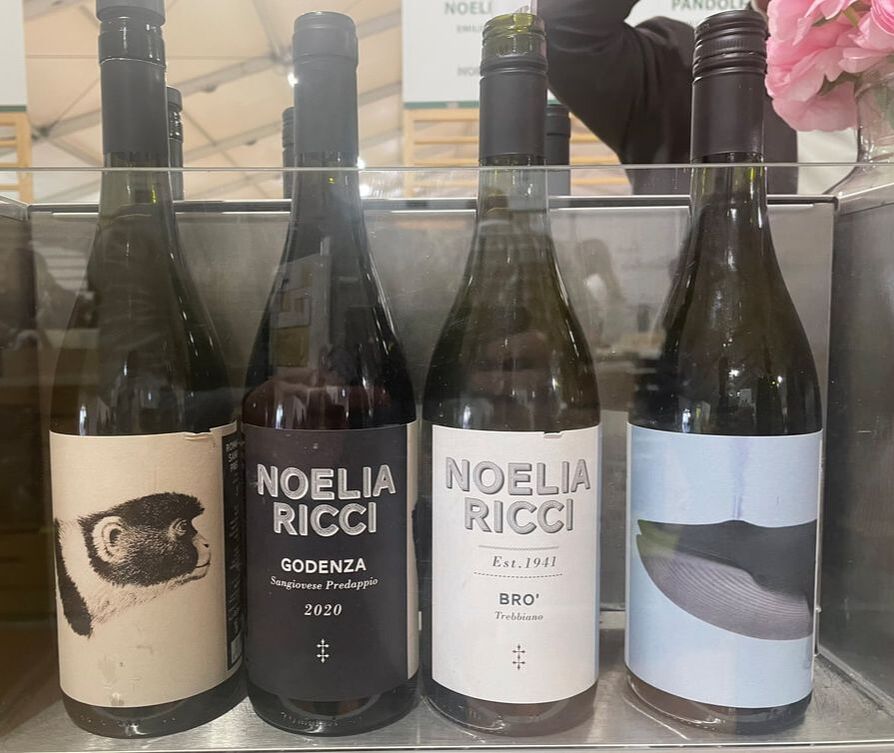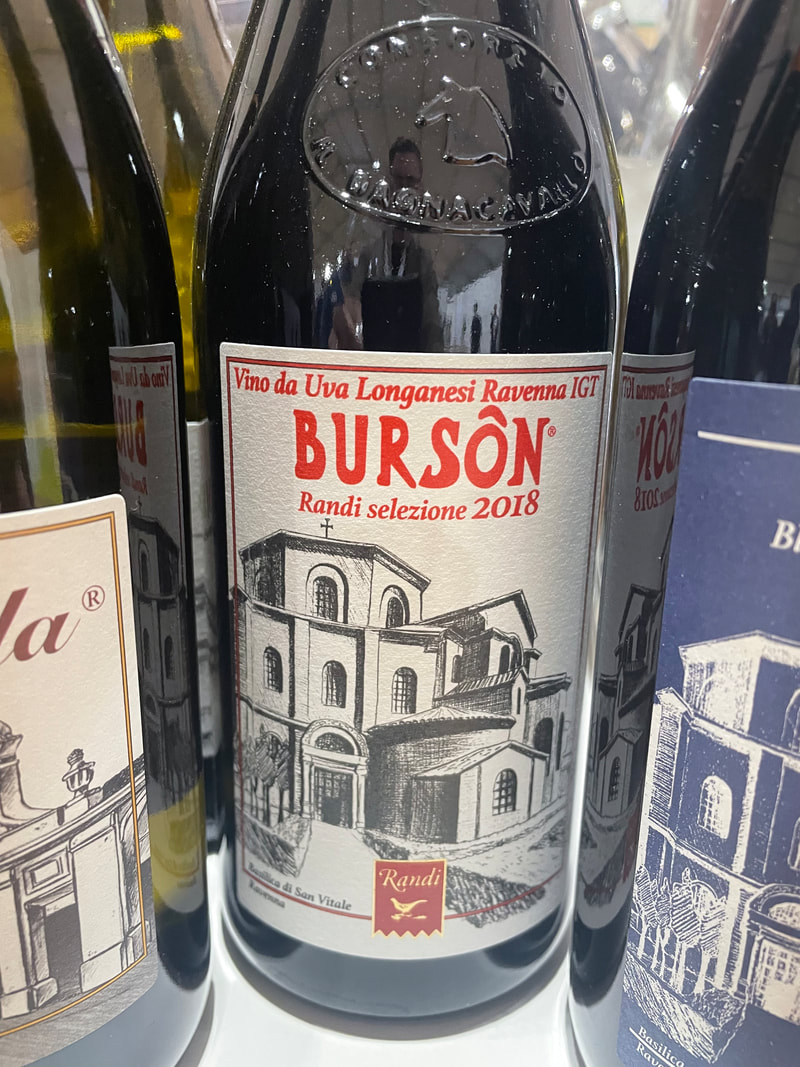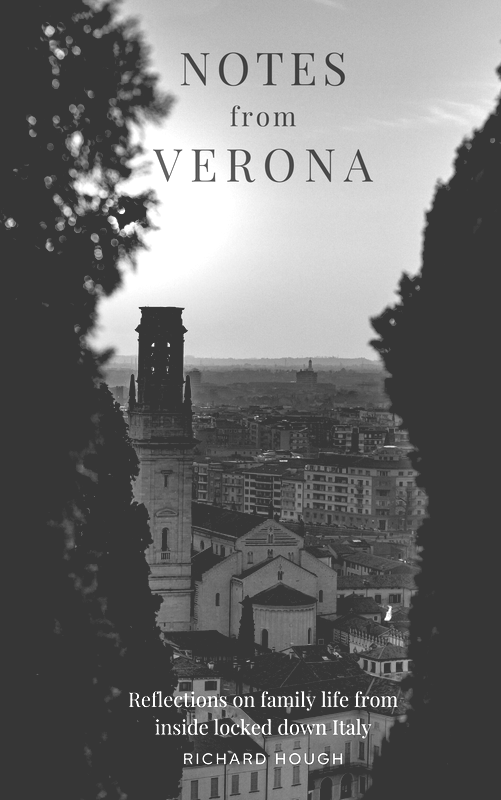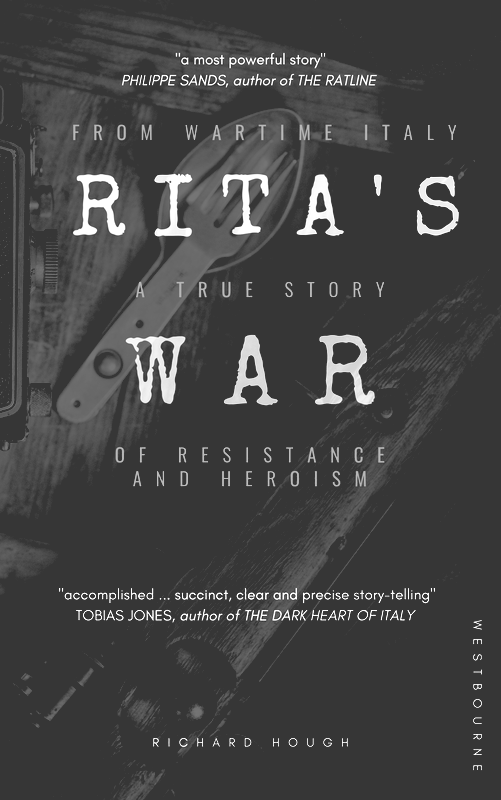|
In search of Lambrusco at Vinitaly 2023, the world's biggest wine fair. The sheer scale and scope of Vinitaly can be daunting, particularly if, like me, your time is limited to a few fleeting forays in between the day job. Vinitaly is the world’s largest wine trade fair, with 17 giant pavilions spread over 100,000 square meters of concrete, in which over 4,400 exhibitors gather from every corner of Italy and beyond to promote their wine to a thirsty audience of international and domestic buyers and enthusiasts. That’s why it’s always best to have a focus, a strategy or plan to bring method to the madness, order to the chaos. Unless of course you’re one of the many locals just trying to neck as much free wine as you can!
I generally look for smaller producers with an interesting story to tell. At the far-flung reaches of the fair ground, the organic pavilion and the independent producers’ area are great places to meet small-scale producers and chat to them about their wines. Tastings and masterclasses are another great vehicle for getting the most out of Vinitaly, particularly if there’s a style or region that you’re especially interested in. They have the added benefit of bringing the producers to you, rather than having to traipse around the sprawling show ground in search of them. Just sitting down at one of the regional stands will often get you a one-on-one masterclass from a supremely qualified sommelier. I tend to find the further south you go, the better the hospitality! Of course, you should never judge a book (far less a wine) by its cover, but labels for me are the first indication that a wine might have something interesting to say. My olfactory senses aren’t particularly well-honed, my palate not that well-schooled, so labels, for me, are an essential entry-point into the sometimes-baffling world of wine. Whilst wine tasting is generally based on appearance (of the wine itself), smell and taste, taking a few minutes to appreciate the label itself can sometimes give you an insight into the inspiration or story behind the wine. With all the fuss surrounding wine appreciation, it’s perhaps surprising that we don’t take the label itself a little more seriously. This year I wanted to focus my surplus energy on my beloved Lambrusco, which meant a quick whizz around the Emilia-Romagna pavilion, followed later that day by a brief foray into the organic pavilion in search of the lovely fizzy red stuff that warms my soul. As well as looking for striking labels, I was particularly interested in a couple of brands that have played a significant part in the story of Lambrusco. The first was Medici Ermete, producer of Concerto, the definitive dry Lambrusco, and one of the first to be exported to the United States, where it would eventually earn a 90-point review in the influential Wine Spectator magazine. Sadly for me, the influential producer proved elusive this time. The second cantina I was interested in was Albinea Canali, a historic winery that can trace its roots back to 1934, when a group of growers came together to form a collective. Albinea is now owned by Riunite, the brand that in 1985 flooded the American market with an incredible 11.5 million cases of an amabile-style Lambrusco wine, sweetened to appeal to the American market, arguably tarnishing the brand on the international stage forever. In 2023, Riunite still has a certain swagger, though its more excessive impulses seem to have tempered. They were serving Lambrusco-based cocktails (an attempt, according to the barman, at trying to make a dent in the prosecco monopoly) and giving away garish pink sunglasses. Very on-brand! The cocktail wasn’t bad either! Stopping for a quick snap of the racing red Ferrari on the way out, I decided to take my foot off the pedal and head to the organic stall in search of something with slightly less va va voom. There were a handful of Emilia-Romagna-based vineries to choose from, all occupied by a steady flow of curious visitors. In Italy, Lambrusco isn’t the damaged brand that it is in UK, America and elsewhere. In fact, from a culinary perspective, the region is widely recognised as one of the most important in Italy, and the dry-sparkling red wine is regarded as the perfect partner for that rich, meaty diet. Drawn in by its distinctive animal-themed labels, I made my way to the Noelia Ricci stand. The story of the Noelia Ricci brand is very much based around the eponymous lady herself. A charismatic figure, it was Noelia who first recognised the potential of the territory around the Villa Pandolfa where she lived. From 1626 the estate was owned by the Marchesi Albicini, before being taken over in 1941 by a local entrepreneur named Giuseppe Ricci. By then, Italy was at war, and the estate was occupied by the Germans and subsequently liberated by the Polish, while its cellars were opened to provide shelter to refugees. In the 1950s, when peace was finally restored, Giuseppe Ricci began extensive renovation works on the estate, encouraging the involvement of local artists and rejuvenating the estate’s agricultural production. He bought two adjoining farms and began planting the first Sangiovese, Trebbiano and Albana vines. When Giuseppe died in 1980, his daughter Noelia realized the full potential of the hills around the villa, planting new vineyards and constructing a new winery. The Pandolfa estate is now owned by Noelia’s granddaughter, Paola Piscopo. One of her children, Marco Cirese, a fourth-generation member of the family, has now taken on the baton, with the aim of transforming the winery into a centre of excellence, while retaining the same values and sense of community that have always inspired the family. The first Noelia Ricci vintage was produced in 2013, featuring those illustrations inspired by late nineteenth-century drawings of animals, detailed and realistic but at the same time graceful and evocative. The wine was sumptuous. Bone dry, with clawing tannins, but plenty of fruit as well. Next stop was Folicello. In the plain between Modena and Bologna, Antonella and Marco produce high-quality organic and biodynamic wines in 12 acres of vineyard that are typical of the Lambrusco Grasparossa DOC. They began making wine in the early 1980s to share with their friends. Since then, their production has expanded, though they continue to produce wines using traditional and organic methods without forcing production. A particular innovation, in a market where such packaging is generally frowned upon, is the bag-in-a-box, which, they claim, offers the same high-quality wines but in a more practical and environmentally friendly way. Very much a family affair (with daughters Federica and Irene now helping out), Folicello produces still and sparkling wines and juices, including a range of organic, sulphate-free and vegan products. I had a quick swig of a very pleasant Folicello Il Rosso Emilia IGT. Harvested by hand. Ruby red, fragrant, fresh and floral, with a dreamy foam. I must order a box! Another winery that caught my attention (but only just) was Randi Vini, tucked away in quiet corner of the organic pavilion. Once again, the labels have a certain rustic charm, pencil sketches with a playful French font. The sketch on the label is of the Basilica of San Vitale, a sixth-century Ravenna church and one of the best surviving examples of early Christian Byzantine art and architecture. It’s one of eight structures in Ravenna on the UNESCO World Heritage List. I’ll be spending my next birthday in Ravenna, which is why I was particularly drawn to this label. As previously mentioned, I’m by no means a wine expert, but I know what I like and something about the Vino da Uva Longanesi Ravenna IGT Bursôn Randi selezione 2018 just ticked my boxes. Made with 100% Longanesi, a little-known red grape variety thought to have been growing in the Ravenna province for centuries, but not propagated or documented until the early twentieth century, it’s one of several verities that have been rediscovered in recent years. Refreshing, crisp and light on tannins, lovely bubbles with a certain cloudy opaqueness that only adds to the sense of earthy authenticity. Locally, Uva Longanesi is known as "Burson", a rather unflattering pseudonym, which means "Big Bore" in the local dialect, in honour of Antonio Longanesi, who discovered the variety growing wild and took cuttings from the vine which he had found growing wrapped around the trunk of an old oak tree. In the 1950s, his son Aldo planted the world's first Uva Longanesi vineyard. Randi Vini continues in that tradition, working with a range of rare native vines underpinned by a philosophy that nature the time and space it needs for truly wonderful wines to emerge. |
AboutRichard Hough writes about history, football, wine, whisky, culture + travel and is currently working on a trilogy about wartime Verona.
|





